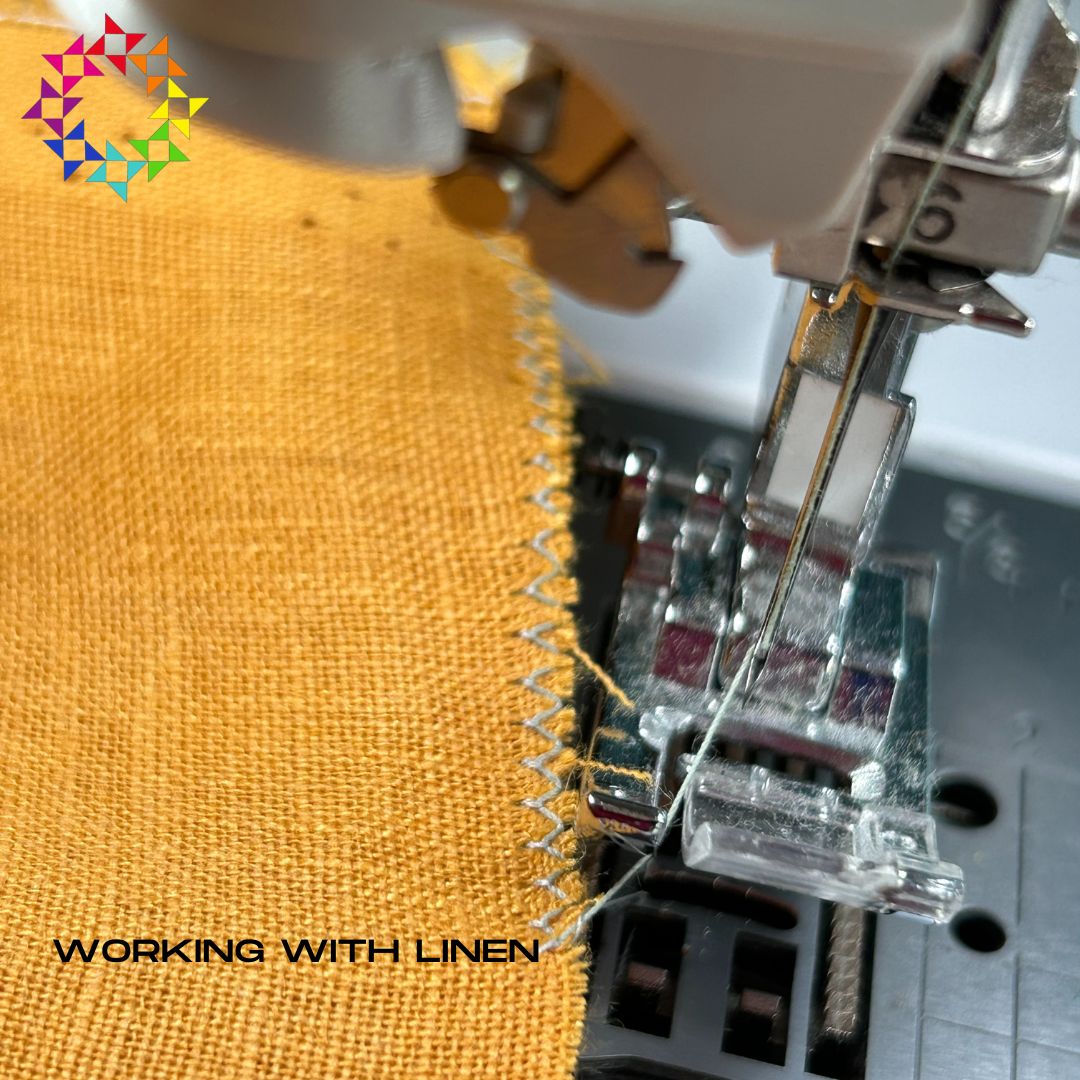
Working with Linen
Sewing and quilting with linen can be a beautiful and rewarding experience. Linen is a versatile fabric that has been used for centuries due to its durability and breathability. It is made from the flax plant and has a unique texture that can add a natural and rustic touch to any project. This month, in addition to piecing quilt samples, Shannon has been working on a linen garment.
When it comes to choosing the right linen for your sewing or quilting project, there are a few things to consider. First, you will want to look for a high-quality linen that is soft and has a nice drape. Linen can vary in quality, so it's important to feel the fabric before making a purchase.
Another factor to consider is the weight of the linen. A heavier weight linen may be better for upholstery projects or home decor items, while a lighter weight linen may be more suitable for clothing or quilting.

Because linen is a looser weave than quilting cotton, and because the fabric needed to be prewashed, Shannon stitched a zig-zag stitch along the cut edge of the fabric (picture included). The linen is gold in color so there is the potential for dye bleed in the washer, Shannon used Synthrapol. Another option is to use color catchers, usually found at your local grocery store! Linen can shrink and wrinkle, so it's a good idea to prewash the fabric before starting your project. This will help to prevent any shrinkage or distortion of your finished project.

For this lightweight linen Shannon was using she chose a Schmetz 80/12 needle and 40wt Aurifil Thread. If you are not sure what needles to use for your project, we have free needle guides at the shop! If you are not sure of the thread weights to use, one of the Birdsong Quilting team can advise you! Also consider digging out your sewing machine manual - many have great reference charts for knowing which stitch is best depending on the desired outcome and the fabric type.

Cutting on the straight grain is imperative for working with linen and prevents your garment from twisting and getting wonky after the first wash. For this project, a dress, it is important that it hangs straight when finished. To identify the straight grain she used the pulled thread method and dressmaker shears to carefully cut the gap left by the missing thread. When cutting quilting fabric it is also important to cut on the straight grain, this is a technique among many others that we teach in our Bootcamp Basics Class.
Are you sewing something special this spring, maybe in linen or something for Easter? Be sure to post pictures on our Facebook page or tag us on Instagram and as always, happy sewing.


